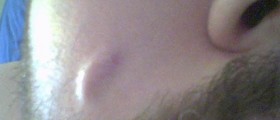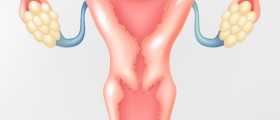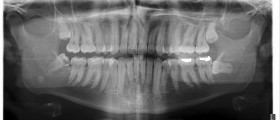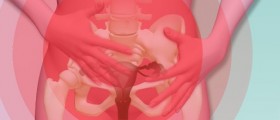
Ovarian Cysts Overview
Ovarian cysts can be defined as small fluid-filled sacs that affect ovaries. Majority of ovarian cysts are harmless, but in some cases even these harmless growths can rupture, bleed or be painful. They may either withdraw and rupture spontaneously or need to be removed surgically.
In an ultrasound image ovarian cysts look like bubbles. The very cyst may contain fluid and its wall is usually very thin. This is typical appearance of ovarian cysts and these types of cysts are known as functional cysts. Functional ovarian cysts are the most frequent ovarian cysts. Ovarian cysts can be both benign and malignant. Ovarian cysts may affect women of all ages.
The most frequent types of ovarian cysts are follicular cysts, corpus luteum cysts, hemorrhagic cysts and dermoid cysts. Furthermore, a woman may suffer from endometriomas and endometrioid cysts. Some women have to deal with polycystic -appearing ovary in which the entire ovary is covered with cysts. And finally, the last type of benign ovarian cyst is cystadenoma, a benign tumor which develops from the ovarian tissue.
Treatment for Ovarian Cysts
There is no unique treatment for ovarian cysts and this is why the treatment basically depends on the actual type of the ovarian cyst and several more factors. As it has already been mentioned in majority of cases women have to deal with functional cysts. These cysts do not require any treatment at all since they clear up on their own.
In other cases where ovarian cysts continue growing or in case they compress the surrounding structure specific treatment is necessary. The treatment is also essential in case ovarian cyst contains malignant cells. There are many treatment modalities for ovarian cysts. Lifestyle changes and intake of antioxidant supplements, certain herbs and diet with little or no red meat may be applied. Some women opt for homeopathy. Still, these alternatives may not be efficient enough and a person must be treated with medications or even surgically.
Oral contraceptives (birth control pills) normally control a woman's cycle. These pills can be highly effective in women with a personal and family history of ovarian cysts. A well experienced doctor decides whether a woman is supposed to take birth control pills and which of the birth control pills is most suitable.
One more treatment modality for ovarian cysts is ovarian cystectomy. This is a surgical procedure in which all the cystic structures of the ovaries are surgically removed.
And finally, in case of malignant type of cysts a woman undergoes removal of the entire ovary called oophorectomy. Oophorectomy is an invasive surgical procedure and once it has been performed and if both ovaries are surgically removed a woman loses the ability to produce eggs and all the essential female hormones. This is why after oophorectomy doctors usually prescribe hormone replacement therapy.














_f_280x120.jpg)


Your thoughts on this
Loading...